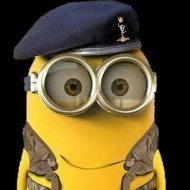-
Posts
11,809 -
Joined
-
Last visited
Content Type
Events
Profiles
Forums
Media Demo
Everything posted by Bullbasket
-
We've all had builds like that. That's what the shelf of doom was invented for. Glad you stuck with it Dave as it looks the business. John.
-
Nice work Dan. Someone has just finished one over on Track-Link. Good looking model. John.
-
Thanks very much Vaastav. John.
-
Thanks for the offer Peter, but I have Greg's conversion too. John.
-
It came out really good. Well done. John.
-
Definitely agree. It's not Tamiya thickness. My one stalled at an early stage, but might get revived in this current lockdown. Nice work, especially the Caunter sscheme and the weathering. I made up jig for the tracks and it helped a lot. John.
-

Takom 1/35 Chieftain Mk 11. 1st RTR, Germany.
Bullbasket replied to Buzby061's topic in Ready for Inspection - Armour
Excellent build and finish. I've got the earlier model to get around to some time. John. -
The only reason that it stopped was because I couldn't get hold of any photos of the engine deck. But having picked up Tom Gannon's "The Sherman in the Chilean Army" at last years Telford, problem solved (he said hopefully). John.
-
The Litigators - John Grrisham.
-
Many thanks for all of the comments. They are very much appreciated. I'm going to have to press on with this a much as I can, because my Tamiya 1/48th T-55 is due any day, and I know that temptation will get the better of me. John.
-
-
You've done a great job with that interior Nick. Nice work. John.
-
Have a look at this site Darryl. http://the.shadock.free.fr/sherman_minutia/tracks/vvss_tracks.html Also, one of the best sets of tracks that I've used are by Panda Plastics. HTH's John.
-
Another very unusual and interesting conversion. Seeing this has made me think about getting my M60 going again. John.
-
The black strips for the registration numbers came from a Star Decals sheet for the M50, which also provides the individual numbers and the Hebrew letter Tsadik, which comes at the end of the registration number. So these were added each side of the front hull and the back plate. The 14th Brigade symbol came from the Tamiya kit, and one went on the glacis plate and the other on the infantry telephone box. Glad to say that the quick respray of the turret was a success. Next, the dust cover around the mantlet and the to canvas sheets each side of the turret were repainted, only this time Khaki Drab using a very old tin of Humbrol. Much happier with result. Once dry, I painted the dust cover with a very watered down Vallejo Russian Green, which is quite dark, and once it had dried it left some nice dark colour in the recess's. Then it was lightly dry brushed with some Cockpit Green from Compucolour (remember them?) Other detail painting carried out on the canvas cover for the gun cleaning rods, opticals on the commander’s cupola and the crew’s kit, hanging around the rear of the turret. Various pigments were used on the turret from Mig and Carrs.......... …..with particular attention paid to the muzzle brake. The .50 cal. Was sprayed black and then dry brushed with Tamiya dark iron and rubbed with a pencil. One thing that I had to add to the model once I had chosen this particular tank, was a searchlight. This came from the Academy kit for the M51, and I covered it with paper towel, soaked in PVA glue. Once in place, I added the wiring using 15 amp fuse wire. The final job was to repaint the Hebrew inscription on the two canvas’s. Actually, the second time around, it went a lot easier, maybe because this time I used Lifecolor white acrylic. Now I can move onto the hull. Thanks for looking. John.
-
I could have done it by sitting on Black Betty (my sit upon mower), but since I'm getting next to no exercise at the moment, I decided to do it with the motor mower. By the time I'd finished, I'd probably covered about 2-3 miles. Got some more to do tomorrow. John.
-
Thanks Chris. Hopefully, if I don't expire from running a lawn mower around the garden. this afternoon, I'll post some update pictures later. John.
-
From the album Hell Freezes Over. Followed up with this....
-

LOCKDOWN No 2 - Opel Blitz Mit Wurfrahmen 40
Bullbasket replied to Redcoat2966's topic in Work in Progress - Armour
Love the tail board Dan. Really good wood effects. John. -

Thunder Models Scammell Tank Transporter
Bullbasket replied to robw_uk's topic in Work in Progress - Armour
Have a look here Rob. I've got some of their chains and it's good stuff. http://www.tankworkshop.com/newshop/index.php?main_page=advanced_search_result&search_in_description=1&zenid=1o311q65oq95d22jd4ai1d5p11&keyword=chain -
Glad to see you back with this one Chris. Nice work with the weathering. Great work. John.
-
Welcome board. You may be a long way from the UK, but there are many Americans on here, so you should feel right at home. John.
-

Coiled Springs (RAF Police Dog Handlers)
Bullbasket replied to Matt P's topic in Ready for Inspection - Armour
I missed this the first time around. Nicely done and very realistic. John. -
I hope that each member of the crew knows which pack is his, otherwise somebody is going find it hard looking for his clean shreddies! Looks good Phil. John.




